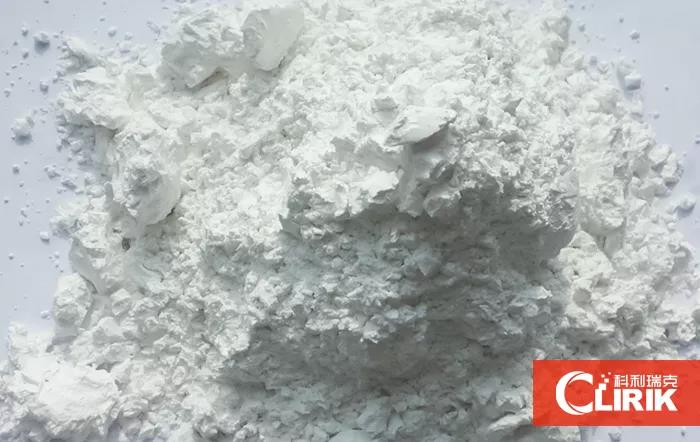Calcium carbonate is an important inorganic chemical product and functional powder material. Because of its unique physical and chemical properties, it has been widely used in roads, building materials, metallurgy, rubber, plastics, papermaking, coatings and other industries.
Types of calcium carbonate
Light calcium carbonate (precipitated calcium carbonate), referred to as light calcium, is calcined from limestone to produce lime (calcium oxide) and carbon dioxide, digested with water to form milk of lime (calcium hydroxide), and then pass carbon dioxide to form calcium carbonate precipitation. Finally, it is prepared by dehydration, drying and crushing. The sedimentation volume of light calcium carbonate is 2.4~2.8mL/g.
Heavy calcium carbonate, referred to as heavy calcium, is a method of mechanically processing natural calcium carbonate minerals, such as calcite, limestone, chalk, shells, etc., through CLUM ultrafine vertical mills and HGM ultrafine ring roller mills. Products with proper particle size. The sedimentation volume of heavy calcium carbonate is 1.1~1.4mL/g.
Active calcium carbonate, also known as modified calcium carbonate, colloidal calcium carbonate, or live calcium for short. Surface modifier (coupling agent, stearic acid, etc.) is used to modify the surface of light calcium carbonate or heavy calcium carbonate particles. The surface-modified calcium carbonate has a reinforcing effect, which is the so-called "active" Therefore, it is customary to call modified calcium carbonate as active calcium carbonate.
Nano-calcium carbonate, referred to as nano-calcium, is the calcium oxide obtained by calcining selected limestone by the carbonization method. The calcium hydroxide produced by digesting it is crushed under high shear and the impurities are removed, and carbon dioxide is introduced to obtain calcium carbonate. The slurry is prepared by dehydration, drying and surface treatment.
The difference between heavy calcium and light calcium
Bulk density: The biggest difference between heavy calcium and light calcium is the difference in bulk density. Heavy calcium is larger, generally 0.8~1.3g/cm3, and light calcium has a smaller bulk density, generally 0.5~0.7g/cm3.
Whiteness: Heavy calcium has relatively more impurities. The whiteness of the product is generally 89%~93%, and it is rarely possible to reach 95% of the product. Light calcium is a chemically synthesized product that removes a lot of impurities, and the purity of the product is high. The whiteness is mostly 92%-95%, and the higher the whiteness can reach 96%-97%, or even higher.
Dry fluidity: Considering fluidity, the microstructure of light calcium is spindle-shaped, and its oil absorption value is large, so its dry fluidity is obviously not as good as heavy calcium. Generally, adding more than 25 parts to the formula will improve the fluidity of the mixture. Make an impact. In comparison, heavy calcium is in irregular granular form, which promotes the fluidity of the mixture. Under the condition that some physical properties of the product are relaxed, the amount of heavy calcium added can be significantly increased.
Moisture content: The moisture content of heavy calcium products is relatively low and relatively stable, generally 0.2% to 0.3%; the moisture content of light calcium is generally 0.3% to 0.8%.
The difference between active calcium and inactive calcium
Hydrophobicity: After the surface of activated calcium is coated with activator, it has obvious hydrophobic properties. It can be distinguished by the condition of active calcium and inactive calcium dissolved in water.
Fluidity: The surface of activated calcium is coated with organic active agent molecules with lower surface tension, and its surface energy is lower than that of non-activated calcium, and the viscosity resistance between particles is reduced, which makes the fluidity of activated calcium powder significantly improved, which also marks the product The difference in dispersion (compared under the same conditions).
Particle size: As the active calcium surfactant reduces the surface energy of the particles, the agglomeration force of the particles is significantly weakened, and the size of the particles is significantly reduced. The difference between the two products is distinguished by electron microscopy.
Oil absorption value: Because the particle size of the active calcium is reduced, the void ratio between the particles is also reduced, making the microscopic surface of the particles smooth and flat. Therefore, the oil absorption value of active calcium is lower than that of inactive calcium.
Uses of heavy calcium powder
|
Fineness |
Purpose |
Recommended equipment |
|
200 mesh or less |
Lightweight bricks, soil amendments, etc. |
High-pressure suspension roller mill |
|
200 mesh -325 mesh |
desulfurization powder, construction supplies, glass, chalk, etc. |
Superfine ring roller mill |
|
400 mesh-800 mesh |
rubber, plastic, sealing material, chemicals, toothpaste, etc. |
Ultrafine grinding mill |
|
1250 mesh -1500 mesh |
paint, stationery, cables, cosmetics, medicine, etc. |
Ultrafine grinding mill, ultrafine vertical mill |
|
2000 mesh -3000 mesh |
high-end paper, high-end PVC, high-end filler, high-end silicone rubber, etc. |
Ultrafine vertical roller mill |
With more than 30 years old professional experience in mining machinery, we dedicate ourselves to creat wealth for you! You can contact us online or send e-mail to
[email protected] to order
Clirik powder grinding mill.
